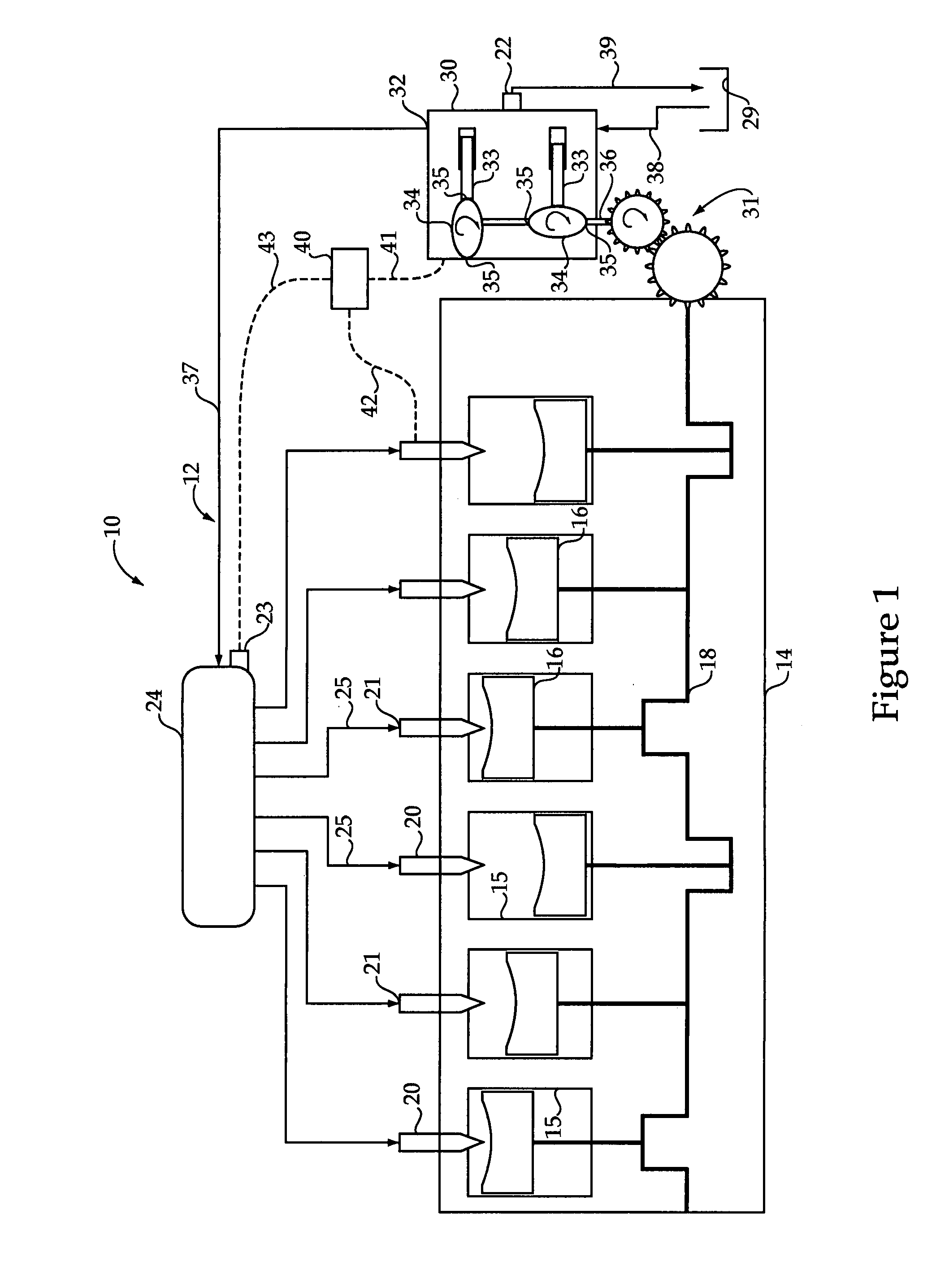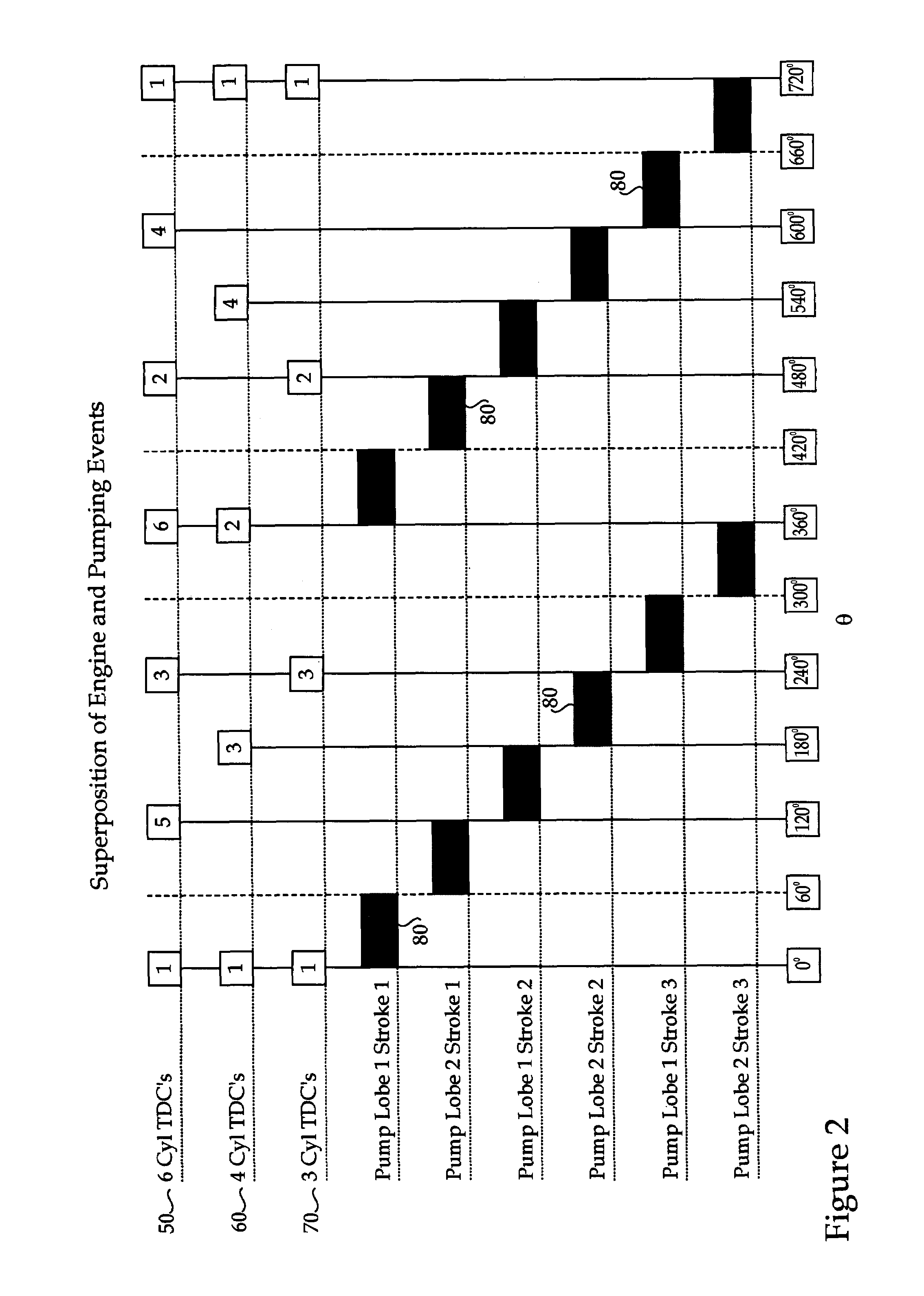Synchronizing common rail pumping events with engine operation
a technology of common rail and pumping events, which is applied in the direction of liquid fuel feeders, machines/engines, mechanical equipment, etc., can solve the problems of affecting the performance of the engine, the difficulty in maintaining and the inability to control the pressure of the rail
- Summary
- Abstract
- Description
- Claims
- Application Information
AI Technical Summary
Benefits of technology
Problems solved by technology
Method used
Image
Examples
Embodiment Construction
[0018]Referring to FIG. 1, an example engine 10 according to the present disclosure includes a common rail fuel system 12 configured to operate at fuel pressures in excess of about 160 megapascals. The term “about” means that when a number is rounded to a number of significant digits, the two numbers are equal. Thus, 159.5 is about equal to 160. In order to operate at pressure in excess of 160 megapascals, various features of the fuel system require increased structural strength and fluid pressure containment capabilities greater than those associated with lower pressure common rail fuel systems. These structural features might include, but are not limited to, double walled fuel lines, high pressure fittings, relatively thick walled common rail and other features known in the art. Engine 10 is like many other engines in that it includes a housing 14 with a plurality of cylinders 15 disposed therein. A piston 16 is positioned to reciprocate in each of the cylinders 15 in a convention...
PUM
 Login to View More
Login to View More Abstract
Description
Claims
Application Information
 Login to View More
Login to View More - R&D
- Intellectual Property
- Life Sciences
- Materials
- Tech Scout
- Unparalleled Data Quality
- Higher Quality Content
- 60% Fewer Hallucinations
Browse by: Latest US Patents, China's latest patents, Technical Efficacy Thesaurus, Application Domain, Technology Topic, Popular Technical Reports.
© 2025 PatSnap. All rights reserved.Legal|Privacy policy|Modern Slavery Act Transparency Statement|Sitemap|About US| Contact US: help@patsnap.com



